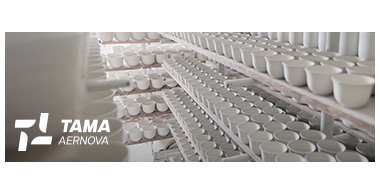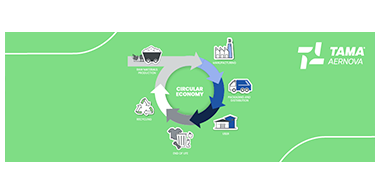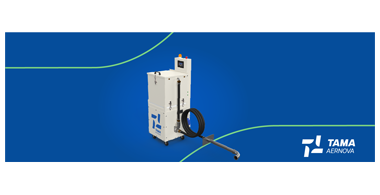
Electrofilter: definition, applications and functioning
The electrofilter
Among all the existing filtering technologies, the one related to the electrofilter, or electrostatic filter, is certainly the most:
- Mysterious;
- Fascinating;
- Versatile;
- Loved/Hated;
- Professional.
Marco Grassi, Vice President TAMA AERNOVA SPA
The electrostatic filter, defined more simply as an electrofilter, is one of the first true technologies related to air filtration that appeared in the age of modern industrialization.
This technology, born in America, was immediately used in the filtering operations of dust from "critical" industrial processes, such as incinerators, glass production, combustion in general, cement factories, etc. In fact, for these applications at high temperatures (which can even exceed 250-350 °C) it was not possible to carry out a filtration using fabric and/or mechanical filters, and therefore a new and alternative solution was necessary.
MYSTERIOUS
In the opinion of many, the electrofilter is a mysterious filter: it retains PM1-PM2.5 particles and yet looking at it from the front you can see through it. When it is running, you can see the fumes coming in but you can't see it coming out...
FASCINATING
The electrofilter technology is, without any doubt, a fascinating process. It's a simple but at the same time demanding technology to be sized. The technical principles that interact on filtration are many and complex.
The operating principle is as follows: high voltage electrodes (metal wires or serrated tips) are charged. These electrodes are interposed between plates and/or earthed metal tubes. The charge of the direct current electrodes can be positive or negative and is used to create an "ionizing wind" between the ionizer and the sensor. The electrically charged ions invest the particles by charging them with a charge (positive or negative) and creating a potential differential between the particle and the plates or tubes that are grounded. The particles then precipitate on the metal plate/tube, which picks them up.
The voltages are direct current and start from 5,000 volts to 100,000 volts, depending on the field of application and the type of electrofilter.
VERSATILITY
Electrostatic technology, applied to filtration, can be considered as the most versatile ever. It's no coincidence that the electric filter has countless applications in the industrial sector: starting from the filtration of oil mists, plastic fumes and vulcanization fumes up to the thermal combustion processes.
In addition, the environmental filtration of suspended dust in factories is very widespread today, in order to obtain an always healthy and safe environment.
The size and performance of an electrofilter can vary from 1,000 m3/h for localized applications (machine to machine) up to centralized applications from 50,000 m3/h and beyond.
From the mechanical industrial sector we move on to the cement and glass production sector, where the fumes reach high temperatures (over 250 °C) and with significant dust loads (100-200 Kg/h).
Combustion is a widespread field of application; but in recent years the field of low power thermal stations (below MW) has also become increasingly important.
LOVE and HATE
The electrofilter is a loved and hated system at the same time. When you have a technical comparison you have very discordant opinions: for some it is an exceptional filter, while for others it is a technology to be used only when you have no other choice.
Why this contrast?
The reason is very simple. It is in fact a technologically very advanced filter, for which a correct training is necessary, in order to install it, use it and assist it at best.
As long as the filter has the correct high voltage, its operation is always very efficient; but when the high voltage fails, the filtering action is totally canceled. There is no middle ground: the electrofilter filters effectively or does not do it at all.
PROFESSIONAL
This determines, on the part of those who propose it and those who use it, a very professional approach. In fact, there are several operations that must be performed correctly:
- Application study;
- Positioning and installation;
- Periodic check up check;
- Correct periodic maintenance.
- All these activities must be performed by properly trained personnel.
Tama Aernova
Tama Aernova S.p.A. has thirty years of design and production experience on electrostatic filtration. Its staff includes high-level technical engineers, efficient service and technical-commercial consultancy capable of carrying out the correct applications and management over time of the customer.
The technical-economic offer of Tama Aernova electrostatic filters is among the widest and most complete on the European market:
- Plug and play groups for the machine tool sector, with filters that can be positioned above the machine tools and work centers (ANTARES - EXPLORER);
- Filter units for centralized systems from 2,000 to 48,000 m3/h as series production (AR);
- Self-washing electrostatic units where maintenance costs are excessively heavy (AL);
- Electrostatics for biomass combustion (ESP).
Tama Aernova's mission is to provide the correct application solutions for the correct resolution of air pollution problems, proposing itself not only as a supplier but also and above all as a partner.
Discover all the electrostatic filters in the Tama Aernova catalogue and find the solution that best suits your needs!



Comments